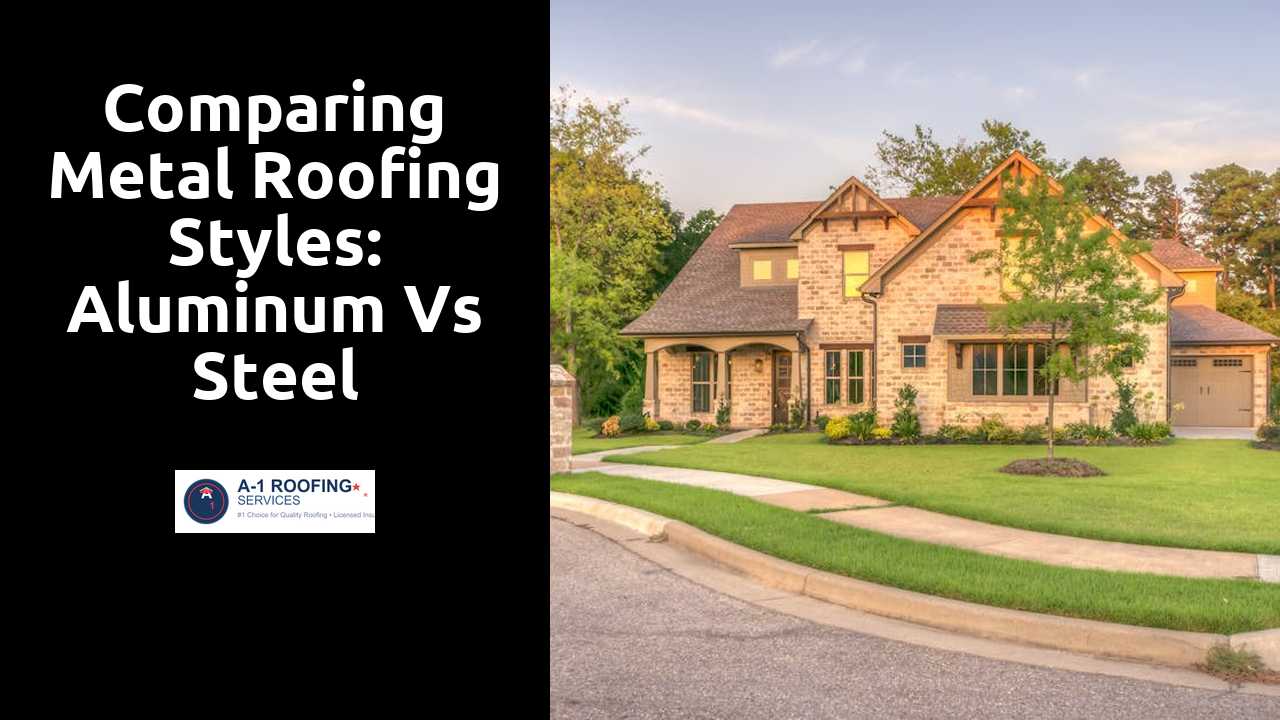
Comparing Metal Roofing Styles: Aluminum vs Steel
Table Of Contents
Environmental Impact
Both aluminum and steel roofing materials have notable environmental impacts that influence their overall sustainability. Aluminum is often recycled more efficiently than steel. This characteristic contributes to its lower carbon footprint. The extraction and processing of aluminum require significant energy expenditures. However, the ability of aluminum to be recycled repeatedly without losing quality offsets some of these initial impacts. Steel also possesses recycling qualities, with a notable portion of steel products being made from recycled materials. This process reduces the environmental burden associated with mining and processing virgin steel.
Choosing between these two metals requires careful consideration of their life cycles. Aluminum's lightweight nature contributes to less energy spent on transportation and installation. Steel contains a higher density, which can lead to increased transportation emissions due to heavier loads. Both materials can have coatings that affect their environmental friendliness, including impact on soil and water systems. Overall, assessing the entire lifespan of each product, from extraction to disposal, gives a clearer picture of their respective environmental footprints.
More tips and tricks can be found here.
Sustainability of Aluminum vs. Steel Roofing
Aluminum roofing is often praised for its sustainability attributes. It is lightweight and has a high resistance to corrosion, which can extend its lifespan significantly. The material is also 100% recyclable, meaning that at the end of its use, it can be processed and turned into new products without loss of quality. This feature reduces the need for virgin material extraction, making aluminum an environmentally friendly choice.
Steel roofing, while heavier, also holds sustainable benefits. Like aluminum, steel is highly recyclable and can be repurposed without losing structural integrity. Furthermore, many steel roofing products are made from recycled content, which lowers the environmental impact during production. The durability of steel means that roofs typically last longer, contributing to less waste in landfills over time. Both materials have attributes fostering sustainability, but their individual impacts depend largely on the specific applications and regional practices associated with their use.
Installation Process
The installation process of metal roofing differs significantly between aluminum and steel. Aluminum panels tend to be lighter, making them easier to handle and install. This can reduce labor costs and time on the job. They typically require fewer fasteners because of their flexibility. This can streamline the overall installation.
Steel roofing, while generally more durable, presents some challenges during installation due to its heavier weight. Specialized equipment may be necessary for lifting and placing panels. The more robust nature of steel requires precise alignment and fastening to ensure a proper seal and prevent issues like water leakage. Homeowners may need to consider these factors when choosing between the two materials for their roofing project.
Comparing the Complexity of Installing Each Material
Installation of aluminum roofing tends to be simpler compared to steel. Aluminum is lighter, which makes it easier for contractors to handle and maneuver during the installation process. Additionally, the interlocking systems commonly used for aluminum panels can reduce the need for additional components, streamlining the assembly. However, it is crucial to have the proper tools to ensure secure fastening and water-tightness.
On the other hand, steel roofing can present more challenges during installation. Its heavier weight requires more manpower and stronger support structures to accommodate the material. Furthermore, precautions against corrosion must be taken, especially if dissimilar metals are used in the installation process. This means ensuring proper sealing and the use of compatible fasteners, which can add complexity to an otherwise straightforward installation.
Energy Efficiency
Metal roofing materials are recognized for their energy efficiency, particularly due to their ability to reflect sunlight. This reflectivity helps in reducing heat absorption, which can significantly decrease the cooling costs in warmer climates. Aluminum roofing typically shows higher reflectivity compared to steel, making it an appealing choice for homeowners aiming to minimize energy expenses. The color of the metal also plays a crucial role; lighter-colored roofs generally reflect more sunlight than darker alternatives.
Insulation properties contribute as another layer of energy efficiency. While steel may not inherently offer the same thermal performance as aluminum, combining steel roofing with proper insulation techniques can optimize energy savings. Many advancements in insulation products allow for improved performance, ensuring that both aluminum and steel roofs maintain comfortable temperatures within the home. Such enhancements make both materials viable options for energy-conscious consumers seeking to lower their utility bills while maintaining a durable and stylish roof.
Reflectivity and Insulation Properties in Metal Roofing
Metal roofing is known for its excellent reflectivity, which helps mitigate heat absorption from sunlight. Both aluminum and steel are common choices, each exhibiting varying degrees of reflectivity based on their finishes and coatings. Aluminum typically outperforms steel in this regard, particularly when treated with reflective coatings. This characteristic can lead to significant energy savings in warmer climates, as the reduced heat transferred into a building decreases the need for air conditioning.
Insulation properties also play a vital role in energy efficiency. Steel roofing, while heavier, can provide a more robust substrate for insulation materials. The thermal performance of any metal roof is influenced by factors such as installation method and overall roof design. Proper insulation strategies, including the use of radiant barriers and thermal breaks, can enhance the performance of both aluminum and steel roofs under varying weather conditions. Ensuring these elements are integrated into the roofing system is crucial for maximizing energy efficiency.
Related Links
Understanding Different Metal Roof Coatings and Their BenefitsAdvantages of Choosing Metal Roofing for Your Home